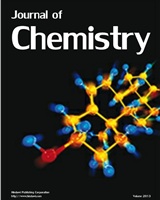MENUMENU

Research > Scientific Contributions
Panseri S., Manzo A., Chiesa L.M., Giorgi A.
Volatile organic compounds (VOCs) have been proposed as one of the main factors for differentiating honeys from different botanical/floral origins. In this work, we investigated the volatile profile of honeys, commercially labeled as buckwheat honeys, from the Alps and its relationship with melissopalynological investigation. The results showed that buckwheat honey samples that contained, to different extents, buckwheat pollen grains on melissopalynological analyses showed similar VOCs profiles, distinguishing them from the other honey floral types analyzed. Among VOCs identified, 3-methylbutanal, butanoic acid, pentanoic acid, and isovaleric acid were considerably greater in the buckwheat honey samples from the Alps. Other compounds were identified only in the honeys containing buckwheat pollen grains such as 3-methyl-2-buten-1-ol, 2-butanone, 2-hydroxy-3-pentanone, 4-methylpentanoic acid, 4-pentanoic acid, butanal, 2-methylbutanal, pentanal, dihydro-2-methyl-3(2H)-furanone, 5-methylfurfural, and cis-linalool oxide. These compounds give to buckwheat honey its characteristic aromatic and organoleptic properties and may be considered interesting as potential “variety markers” for botanical determination.
